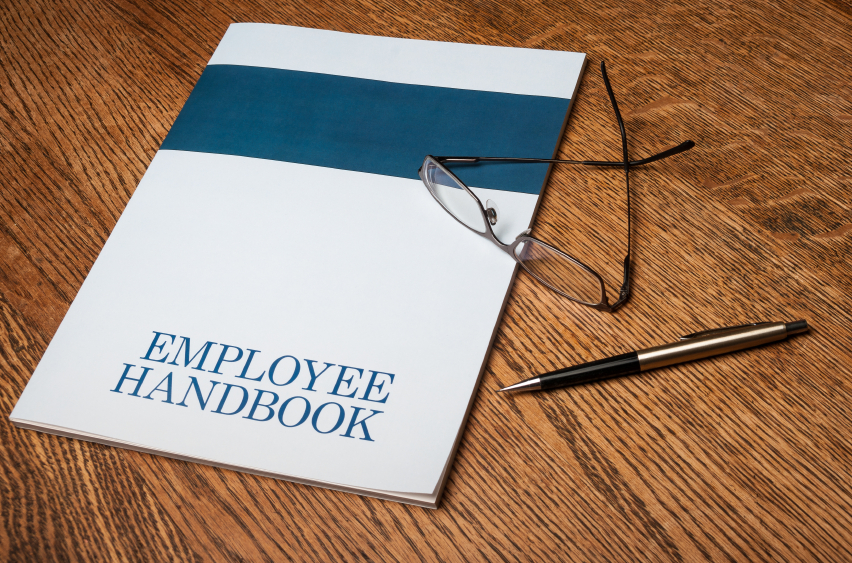CRAFTING EMPLOYEE HANDBOOKS THAT WORK
Employee handbooks serve as the cornerstone of the employer-employee relationship, outlining legal rights, employee responsibilities, and company expectations. A well-crafted employee handbook, concise yet comprehensive, not only informs but also mitigates legal risks and misunderstandings.
It can be a challenge to know what to include in an employee handbook. A challenge that is made harder as companies grow operations into multiple state and countries, laws change at the state and federal level (and sometimes in different directions), and employee expectations regarding work shift. As the work world evolves, regular updates and clear communication become imperative to ensure compliance and alignment with current standards.
The following are the most common employee handbook issues that we encounter:
Excessive Length
Employee handbooks should be comprehensive, but concise. Not every workplace issue needs a policy and a policy doesn’t need to address every possible scenario that might arise. Attempting to fill the employee handbook with every policy and procedure that an employee might need to know will only result in creating a document that is unwieldy and ineffective.
Ideally, an employee handbook should be between 30 and 50 pages. That ensures readability and relevance. Anything longer indicates too many policies (or unnecessary internal procedures) or too much detail. Either way, your employees will get lost in the abyss, which doesn’t serve them or the company.
Missing Important Policy Language
There are certain policies that need to be in your handbook. Failure to include them can open the company to liability. What is required depends on several factors — location, company size, industry. It’s important to know what legal requirements apply to your business, so you can ensure your handbook covers those areas for compliance.
The following are some of the federal and state laws that would trigger an update to your employee handbook if you do not currently have policies covering these areas:
- Family and Medical Leave Act (50+ employees)
- Title VII of the Civil Rights Act/Anti-Discrimination (15+ employees)
- Consolidated Omnibus Budget Reconciliation Act (COBRA) (20+ employees)
- Nevada Pregnant Workers’ Fairness Act (15+ employees)
- Nevada Paid Time Off (50+ employees)
In addition to policy language that is required for compliance, there are a host of other policies that are recommended to protect the company, including policies regarding at-will employment, disclaimer language regarding the handbook not being a contract, and that the employer has the sole right to modify the handbook.
Regular reviews ensure policies align with legal requirements and include essential information to mitigate risks.
Infrequent Reviews and Updates
Failing to conduct regular reviews of your employee handbook means you are likely missing required policy language and may have policy language that is no longer legal or enforceable. We recommend that employers review their employee handbooks at least annually to determine if policies remain compliant and are being applied consistently. If updates need to be made, they should be made promptly.
When updates are made to an employee handbook, its important to notify employees of the changes and get a signed acknowledgement. Failing to notify of the changes or get an acknowledgement that they received the updated policy makes it difficult to enforce compliance. Employees cannot comply with a policy changes they know nothing about and employers cannot prove that they knew without the acknowledgement.



As an included benefit of membership, NAE members can have our team of HR professionals review their employee handbook for compliance each year. Our team will review your employee handbook for compliance with state and federal law and make suggestions for revisions, including recommendations for additional policy language or existing policy language that can be removed.
Additionally, members have access to our Model Employee Handbook through our Member Portal (login required). This sample employee handbook includes commonly required policy language that employers can modify and use in creating their own employee handbook. There’s no need to start from scratch. Our Member Portal also includes a collection of sample policies that you can use to update your employee handbook.
For NAE members who want to start from scratch or need more hands on assistance with their employee handbook, our team of HR professionals are available for assistance in drafting or revising your employee handbook at an additional, but member friendly hourly rate. Contact NAE for more information on this popular service.
Mailing List Sign Up Form
Fill out this mailing list sign up form to receive monthly email updates on the latest NAE news, HR issues, special events, training dates and more!
